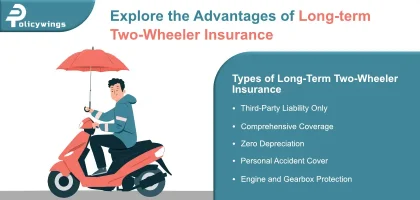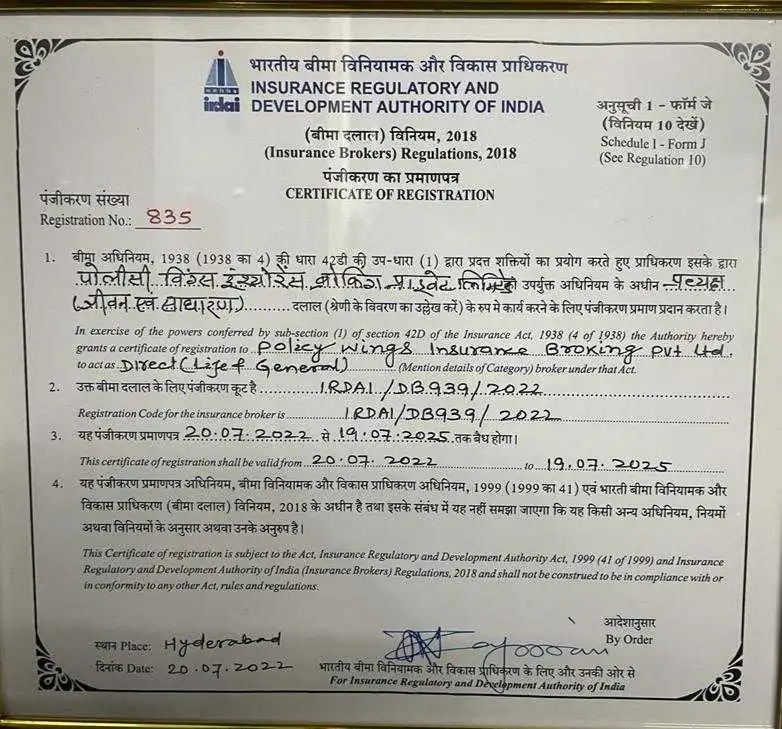Claim settlement process
Claim Settlement Process
The purpose of a health insurance policy comes into play when the insured is admitted to a hospital or suffers a medical emergency and has to pay for it. There is a term called a health insurance claim that occurs at that point if the hospitalization or the medical costs are to be paid for by the health insurance company at that point.
Any medical costs that arise as a result of a health insurance claim will be covered by the insurance provider if the claim is approved.
Although many people buy health insurance coverage, many do not understand how it actually works. People are generally concerned about the fact that an insurance claim will have to be made during the critical hospitalization period in order to receive benefits.
The main reason people buy health insurance is to be able to claim benefits when they are most in need of them. In order to be able to get the claim handled properly, one needs to be aware of how health insurance claims operate.
This article will discuss the types of health insurance claims and the process of settling the claims as they relate to health insurance.
Health Insurance Claims:
The purpose of buying a health insurance plan is to look for financial support that can cover the costs you have incurred throughout treatment. A claim is a formal request that aids in getting you the healthcare you need at the expense of your insurance provider. You only have to submit a claim to have the insurance provider cover the cost of your treatment.
The majority of health insurance policies require a hospital stay of 24 hours or more in order to file a claim. There are some plans that also include daycare coverage as well. To ensure that a claim is submitted and accepted quickly, you must make sure you understand and adhere to all claim-related regulations.
The timely payment of your health insurance premiums is also essential; otherwise, your coverage may lapse and your claim will not be processed.
Types of health insurance claims
There are two types of health insurance claims:


All about Cashless claim
A network hospital is a healthcare facility or hospital that has an affiliation with a health insurance provider to provide cashless treatment to policyholders.
Your insurance provider will directly cover all of the types of treatments and hospital stays that are covered by your plan. As the medical bill is immediately covered between the insurer and the hospital and the insured does not have to pay for the same, this is known as a cashless claim.
A list of hospitals that are part of the network of the health insurance provider is provided when you acquire a health insurance plan.
You wouldn’t be qualified for a cashless claim unless you were admitted to a network hospital. Both scheduled and emergency hospital stays are eligible for cashless claims.
Hospital stays can be costly, but a cashless claim facility spares you the hassle of scrambling to get funds at the last minute.
Advantage of cashless claim:
- The quick and straightforward procedure for filing a claim.
- You won’t have to worry about paying anything because your health insurance provider will cover all costs.
- No paperwork hassles as most of it would be taken care of by the hospital.
Disadvantages of cashless claim:
- In the event of an emergency that could be troubling, you are limited to getting care at a network hospital.
- Due to the need to fulfill all requirements, the release process may take some time.
The cashless claim settlement process:
- Notifying the health insurance provider is the first and most crucial step when claiming cashless health insurance. In the event of a planned hospitalization, you must make sure your claim request is registered as soon as possible, preferably before.
- You must complete and submit a Pre-Authorization/Claim Form after registering your claim in order to be approved for a cashless health insurance treatment.
This form may be downloaded from the TPA website or obtained from the hospital assistance desk. At least three to four days before the hospitalization, the form must be sent to the hospital.
You must make sure that your claim request is registered within 24 hours of being hospitalized, even in an emergency. - You may also request from the hospital an estimate of the cost of the care you will receive. This will enable you to determine whether the expense of therapy is sufficiently covered by your health insurance.
- If you have several health insurance plans and one’s coverage is insufficient, let the other insurance providers know so they can utilize your claim.
Check to see if there are any room sub-limits in your policy. If it is permitted by the rules, you may choose a shared room. - Only once your health insurance provider has given its permission, the hospital will offer you a cashless procedure. The hospital could require you to make an advance payment if the approval is delayed. The money will be returned to you after your request has been approved.
- Don’t forget to ask the hospital for the invoices and discharge summary to be forwarded to the health insurance provider when the treatment is completely completed.
- The claim compensated by the health insurance company would be evident after you received the final clearance.
You will be responsible for paying for the consumables and other costs if the insurance does not cover them. You can ask for reimbursement if you have other coverage that might cover these costs. - Pre- and post-hospitalization costs are only reimbursed at network hospitals.
Therefore, it is a good idea to have confirmed true copies of all of your bills and your discharge summary in case you decide to subsequently seek payment from another insurance company for the remaining balance.
All about Reimbursement claims:
As the name implies, with reimbursement claims, you must first pay the medical expenses out of your own money before you can request a reimbursement from your health insurance provider. Two circumstances are usual for this kind of claim:
- Health insurance policies that exclude cashless payments
- When you receive care at a hospital that is not in the network of cashless hospitalization.
Advantages of reimbursement claim:
- You can receive care at any hospital and afterwards be paid.
- A speedy discharge can happen as payment is done in cash.
- Along with your hospitalization claim, you can receive your pre-hospitalization and post-hospitalization claims.
Disadvantages of reimbursement claim:
- You first need to pay off all the debts, therefore you’ll need to make financial arrangements.
- Once you are dismissed, only then will you be paid back.
- There is a lot of paperwork required.
Reimbursement Claim Settlement Process:
- The most crucial step in requesting compensation, just like in a cashless claim, is notifying the health insurance provider. Make sure to register your claim request as soon as possible.
- Make sure to notify your health insurance provider at least three to four days in advance if you anticipate needing hospitalisation.
- In an emergency, be sure to register your reimbursement request within 24 hours of being hospitalised.
- All treatment expenses will be your responsibility to cover out of pocket.
- When you are prepared for discharge, don’t forget to bring all of the bills, receipts, reports, discharge summaries, etc. that have been confirmed true and stamped and signed by the hospital with you.
- You can submit a claim for compensation after you get home. A responsible friend or family member can assist you with the formalities if you are still recovering.
- The insurance provider must get all medical records, doctor certifications, and bills.
- The claim will be refunded once all the information has been evaluated and verified.
What are the documents required to make a claim?
- Cashless Claim:
When filing a claim with your health insurance, you must provide the following papers; attempt to keep them all in one location. Your family members should also be aware of them so that, should you ever end up in the hospital, they will know exactly where to find all of the relevant paperwork.
a) Health or Policy Card of the Insured Person Receiving Treatment and KYC documents.
b) Pre-authorisation form duly filled.
c) Doctor’s advice for hospitalization.The rest of the documents would be provided by the hospital such as:
d) Reports of analytical and diagnostic tests—CT scans, ultrasounds, X-rays, blood reports, etc.—duly completed.
e)In the event of an accident, a copy of the police report and a medico-legal certificate, as well as prescription drug receipts and invoices and diagnostic test reports with a discharge summary mentioning the exact line of treatment. - Reimbursement Claim:
At the time of filing your reimbursement claims, you need to file the documents serially for the insurer/TPA to process your claim smoothly. Documentation is the most important part of the process for reimbursement claims:
a) Health or Policy Card of the Insured Person Receiving Treatment and KYC documents.
b) Copy of the claim intimation sent via letter or email.
c) Completely filled out and signed the claim form, doctor’s consultation papers, your account information for the reimbursement transfer, and KYC documents along with the copy of the cancelled cheque of the policyholder for the transfer.
d) Original receipts and invoices for prescription medications
e) Original reports from investigative and diagnostic testing, such as blood tests, CT scans, ultrasounds, and X-rays, etc.
f) A summary of the FIR and medical-legal certificate regarding discharge in the event of an accident.
g) Discharge summary mentioning the exact line of treatment.
How does the health insurance claim process work?
Your insurer charges you a premium in exchange for financial security in the event of any unanticipated medical costs.
The act of notifying your insurer of a medical bill so they may reimburse you in accordance with the terms and conditions of your insurance policy is known as filing a claim. According to the terms and circumstances outlined in the policy, the insurer is responsible for paying your hospitalisation expenses.
You can submit a claim via the cashless or reimbursement process against your health insurance plan.
When you choose a cashless claim, the Third-party Administrator’s (TPA) job is to work with all parties involved to settle your claim in accordance with the policy’s terms and conditions.
However, to begin the reimbursement process, you must file a claim directly with your insurance provider, either online or by mail.
Points to remember about health insurance claims
When filing a claim under their health insurance, the insured should exercise caution with regard to a few key issues. These considerations aid in the quick and easy resolution of claims. The following are the points:
A. Required Documents:
Other important documentation would be needed when filing a claim in addition to the pre-authorization form and the original medical bills and reports. They consist of the following:
a) A current ID of the insured
b) A copy of the policy bond and bills for any equipment utilised in the operation
c) Cancelled cheque
d) Whatever further paperwork the insurance provider may ask.
B The maximum sum insured:
Only the sum insured limit that the insured has selected applies to the admissibility of health insurance claims. The excess would need to be paid by the insured if the claim was more than the amount covered. Therefore, the insured should examine the health insurance policy’s sum insured limit.
C. Exclusions:
There are several situations that health insurance coverage does not cover. Generally, this refers to exclusions. A claim would be denied if it was submitted for an excluded expenditure. Therefore, it is advisable to review the plan exclusions before filing a claim to avoid filing one for an excluded item.
The insured would be aware of the reason for rejection even if the claim was lodged and later denied.
D. Timeline:
In the case of a cashless claim, there is a deadline for submitting the pre-authorization form. The pre-authorization form must be filed three to four days in advance for scheduled hospitalisation and within 24 hours for emergency hospitalisation. To be eligible for cashless claim settlements, compliance with certain deadlines is required. The claim may be delayed if the deadlines are not met.
E. Hospital network list:
Only when treatments are received in a hospital that is part of a network is a cashless payment of a claim conceivable.
Therefore, before receiving treatment, the insured should check the list of affiliated hospitals if they desire to use the cashless claim service. The list is conveniently available online and on the website of the insurance provider.
F. The insurance policy’s continued efficacy:
Only when health insurance coverage is active and has not expired are claims paid out. The claim would be denied if the insurance had expired. As a result, the insured should make sure the policy doesn’t expire in order to benefit from quick claim payments.
Steps to File a Health Insurance Claim Form:
- Planned hospitalisation:
a) At least five days prior to the scheduled treatment date, you must mail or email the cashless claim form to your insurance.
b) When the insurance provider receives your cashless claim form, they will notify the hospital.
c) A letter of confirmation will be sent to you, and it will be good for seven days starting from the date of issuance.
d) Before being admitted, submit the confirmation letter and health card. The insurance provider will cover your medical costs. - Emergency hospitalisation:
a) Within 24 hours after being hospitalised, you must tell your insurance company or third-party administrator. You will receive a claim notification and reference number.
b) Your cashless claim form should be completed and sent by the hospital to your insurance.
c) After receiving your cashless claim form, the insurance company will send authorization to the hospital.
d) The insurance provider will cover your medical costs. You will be notified via both your registered cellphone number and email address if your claim is denied.
How do you check the status of your health insurance claim?
You can check the status of your health insurance claim in multiple ways. For cashless hospitalisation, you can contact the TPA or the insurance desk of the insurer or call the call centre of the insurer with your claim reference ID for the exact status of the claim. Also, you can track the status of your claim online through the official website of the insurer or the TPA or through your mobile application.
For reimbursement claims, you need to either call the call centre of the insurer or the TPA or track it online or through the mobile application with details of your claim such as the claim reference number.
For escalations and delays, there would be an escalation matrix provided by each insurer which could be referred to.
Top 4 reasons for rejection of Health Insurance Claims:
You must have overheard people lamenting the denial of their health insurance claim. Have you ever wondered why someone might reject you?
In order to receive the required help from your health insurance provider, you should avoid making the following typical errors that might result in the claim form being rejected:
- Reason 1: Incomplete Process:
This is one of the most common types of rejections when the form is not filled properly. Before submitting a claim, you must fully understand the regulations that each health insurance provider has established for itself.
How to avoid it?
Contact a corporate executive from your health insurance provider if you have any questions. The form can be rejected if you submit it with errors or depart from the company’s protocol. - Reason 2: Understanding the waiting period:
If there is a waiting period specified in the policy document for a specific ailment, then the claim would not be admitted.
For example, a health insurance provider has a waiting period before paying out maternity benefits. Therefore, if you submit a claim within the waiting period, it will be denied.
How to avoid it?
Read the terms and conditions of the policy before opting for the plan and filing the claim so that you are completely aware of your rights. - Reason 3: Lapsed policy:
Health insurance plans are usually one-year contracts. So, if you wish to continue your health insurance coverage, you need to pay the due premium on time and renew your plan to receive continuity benefits. Your claim could be denied if your policy is not renewed on time.
How to avoid it?
Remember to renew your policy on time. Opt for standing instruction or ECS (Electronic clearing system) so that your policy validity continues. You can also opt for a long-term policy renewal of 2 or 3 years so that you do not have to pay your premium every year. - Reason 4: Exclusions:
Each health insurance policy has a specific list of exclusions mentioned. If you file a claim listed as an exclusion, your claim would be denied.
How to avoid it?
Know all about the policy exclusions so that you are well aware of the list of exclusions before filing a claim.
If you read the terms and conditions of your health insurance policy, declare your health conditions clearly before opting for the policy and follow the process and submit all relevant documents on time, your claim would surely be admitted without any hassle.
Conclusion
You are financially protected against any unanticipated medical emergency with health insurance. It is very important these days to ensure that you and your whole family have an insurance policy. One must compare different plans and policies in order to buy the most suitable one.
Frequently Asked Questions
Settlement of claims without the use of cash is simple and convenient. One may use the cashless claim if the hospitalisation is arranged and the treatment is provided in a network hospital. However, one might choose to file a reimbursement claim in cases of emergency if they don't have time to examine the list of network hospitals or if the therapy isn't offered there.
A health insurance claim can be settled with several different insurance providers, yes. In the event of a claim, all insurance companies should be notified, and the necessary paperwork should be given to each insurer.
Services, administrative fees, and expenses for an additional bed, washing, syringes, and other items are among the expenditures that are not covered by the insurance. See your insurance policy for further details on exclusions.
Yes, your insurance coverage does include a waiting period. With the exception of an accident, you often have to wait 30 days before you can submit a claim. Additionally, there is a waiting period for pre-existing problems and certain illnesses.
Depending on the insurance, this could change. So, verify with your insurance provider to prevent unpleasant surprises when it comes to settling claims.
Leading Health Insurance Companies
















